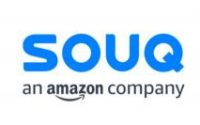While blogging may appear to be a simple exercise, it has its nuances. DA, PR, Do-Follow Links, Keyword Density, Anchor Text, etc can confuse any digital nomad.
Here are some blogging terms you need to know in order to maximise your blogging ROI!
Domain Authority (DA) is a search engine ranking score developed by Moz that predicts how well a website will rank on search engine result pages. A Domain Authority score ranges from one to 100, with higher scores corresponding to a greater ability to rank. You can check your blog’s DA, here.
According to Moz, they calculate Domain Authority by taking into account a number of signals, including:
• The number of incoming links pointing to your blog
• The quality and relevancy of incoming links
• The quality of your blog’s content
• Social Signals (the popularity of your domain in social media networks)
• Your website’s SEO performance in general
PageRank (named after Larry Page, one of Google’s Founders) is a searching algorithm developed by Google and now used by webmasters to judge the quality of a website regarding the backlinking and search engine optimization (SEO). The page rank value of any given website ranges from 0 to 10 points.
The higher the PageRank, the more a website has a chance to rank on top pages in Google search engine. You can check the PageRank of your website/blog, here.
Do-Follow Links take you from your website to the new URL embedded in the link. They are important because search engines crawl them and count them as votes of quality.
By default, all links are do-follow links unless they are modified to be no-follow links manually or are automatically changed by a website setting.
Keyword Density is the percentage of the number of times a keyword appears on a page divided by the total number of words in that page. So if in an article of 1,000 words you are using your keyword 10 times, your density will be 1%. You need to keep a realistic keyword density percentage of around 5-10% which looks natural and not stuffed! Google penalizes for over-optimization tricks indulged by over-enthusiastic digital marketers.
Anchor Text is the visible, clickable text of a link. It usually appears in a different color than the surrounding text and is often underlined. Good anchor text tells the reader what to expect if they click on the link. SEO best practices dictate that anchor text is relevant to the page you’re linking to, rather than generic text.
Now that you are conversant with all the semantics of guest blogging, start blogging and make sure it’s to inform, educate, or bring awareness.
Content is what makes the internet go round and smart guest blogging will allow your brand to increase exposure, drive backlinks, improve search rankings, and facilitate conversions.
#GuestBlogging #GuestPost #BloggerOutreach #LinkBuilding #ContentMarketing #BackLinks #Blogging #SEO







